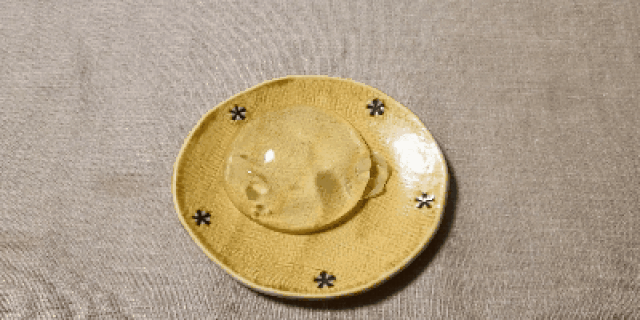
Japan’s famous water cake now has some stiff competition.
Back in 2014, Japan went crazy for a new type of dessert dubbed a “Raindrop Cake“, which was so delicate it was said to disappear in 30 minutes. The unique dessert quickly went on to receive worldwide attention…and a lot of copycat versions based on the original from Kinseiken in Yamanashi Prefecture.
Yamanashi’s creation is officially called Mizu Shingen Mochi, with “mizu” meaning “water” and “Shingen mochi” being the name of another jiggly sweet made by the company, which is so famous it even has its own KitKat.
For years now, we’ve always gone to Kinseiken for our raindrop cakes, but recently we heard good things about a store in Kyoto near the famed Fushimi Inari Taisha that’s also become well known for its own take on the watery sweet. What’s even better is they deliver, so we hopped online and placed an order for a box of six, which cost 3,400 yen (US$30.40), although they’re also available in sets of three for 2,200 yen.
▼ These raindrop cakes, made by Marumochiya, are called Mizu Maru Mochi, with “maru” meaning “round”.
According to Marumochiya, the Mizu Maru Mochi is by far their most popular product, which raised our expectations for the sweet. When our box arrived, we unpacked the four things needed to make, and enjoy, the Mizu Maru Mochi, which consisted of kinako (roasted soybean flour), kuromitsu (brown sugar syrup), a toothpick, and the sweet itself.
▼ We were surprised to find the sweet packaged up like a big water balloon.
Resisting the urge to hurl the water balloon at someone, we followed the instructions and used the toothpick to pierce the rubber and release its contents onto a plate.
▼ Ta daaa!
The rubber was a lot tougher than we’d anticipated, as it broke the little toothpick, making us wonder if this was some special sort of casing made especially for this sweet.
The piercing left us with an unfortunate little crack on one side of the raindrop cake, but that was easily hidden with a dollop of kuromitsu and a sprinkling of kinako. The rounded surface glistened beautifully in the light and was completely see-through, like the original one from Yamanashi Prefecture, so in terms of appearances, we were off to a good start.
▼ Using coloured plates helps to add some extra visual appeal to the treat.
To be totally honest, we were expecting some type of difference between this raindrop cake and the original, perhaps in terms of texture or flavour. However, when we actually tried a spoonful, we were surprised to find there was no discernible difference between the two varieties at all!
Both the Mizu Maru Mochi and the Mizu Shingen Mochi, which we’d just eaten last month, melted on the tongue instantly, and the subtle flavour of the sweet water jellies was almost identical. If we did have to choose between the two, we’d say the jelly in the Mizu Shingen Mochi was slightly more delicious, as it had a more well-rounded and balanced sweetness.
▼ Mizu Shingen Mochi (top) and Mizu Maru Mochi (bottom)
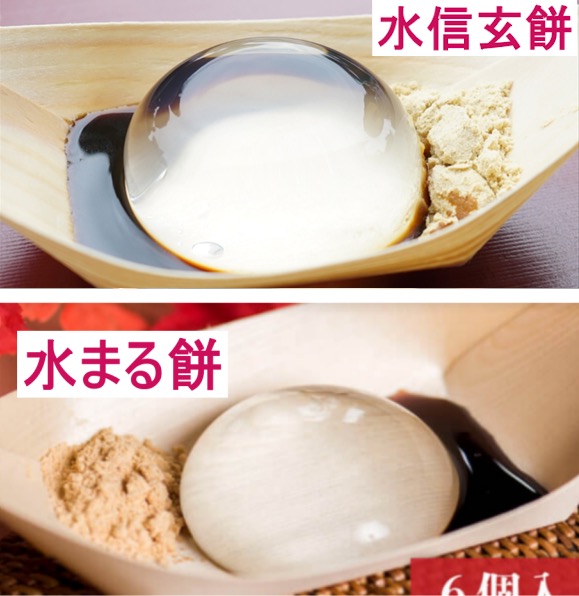
However, there’s one big point of difference that makes the Mizu Maru Mochi a better choice for this time of year. Unlike the Mizu Shingen Mochi, which is only available during the months of June through to September, the Mizu Maru Mochi is available year-round.
▼ This Kyoto-made version will definitely satisfy our cravings for raindrop cakes until June!
It doesn’t have to be summer to enjoy the watery delight that is a Japanese raindrop cake, and now we don’t have to travel to experience it either. Kind of like Japan’s oldest sweet, whose makers also deliver, from their centuries-old shop straight to your door.
Related: Marumochiya, Kinseiken
Images © SoraNews24
● Want to hear about SoraNews24’s latest articles as soon as they’re published? Follow us on Facebook and Twitter!
[ Read in Japanese ]

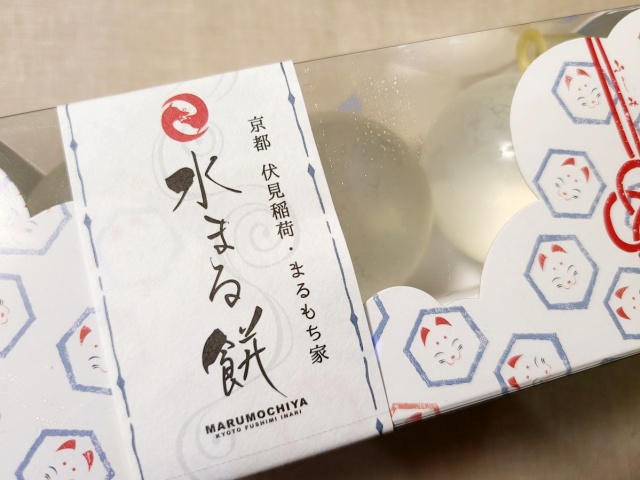

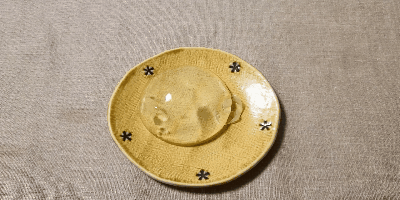
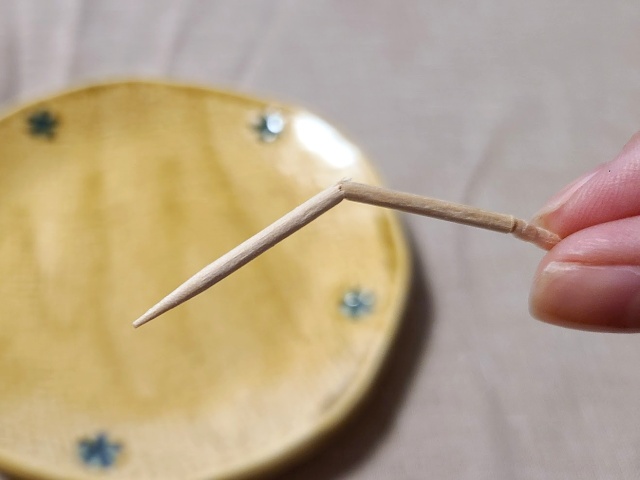

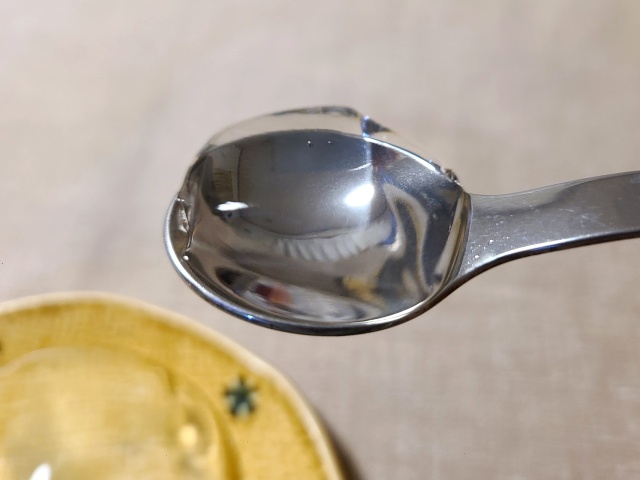
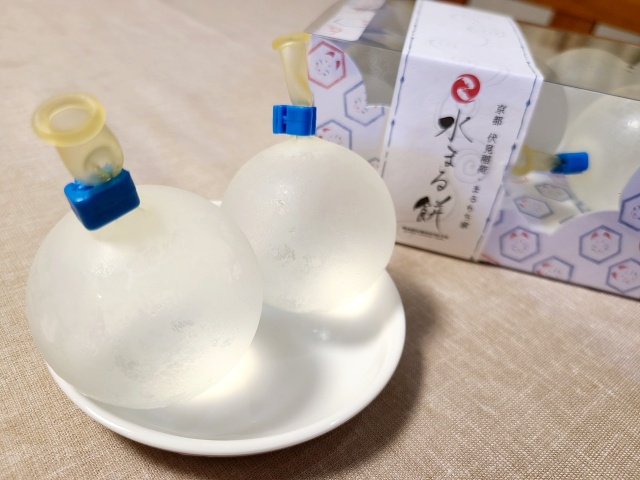
 Sweet mochi beer? Yamanashi sweets maker teams up with craft brewer for Kuromitsu Black
Sweet mochi beer? Yamanashi sweets maker teams up with craft brewer for Kuromitsu Black Make your very own Japanese Raindrop Cake 【Video】
Make your very own Japanese Raindrop Cake 【Video】 It’s eco-friendly AND delicious! Popular Yamanashi sweet now comes in an edible container
It’s eco-friendly AND delicious! Popular Yamanashi sweet now comes in an edible container Häagen-Dazs releases new mochi ice cream, and it’s amazing! 【Taste test】
Häagen-Dazs releases new mochi ice cream, and it’s amazing! 【Taste test】 Japanese YouTuber tests out homemade Water Cake three different ways【Video】
Japanese YouTuber tests out homemade Water Cake three different ways【Video】 McDonald’s new Happy Meals offer up cute and practical Sanrio lifestyle goods
McDonald’s new Happy Meals offer up cute and practical Sanrio lifestyle goods Studio Ghibli glasses cases let anime characters keep an eye on your spectacles
Studio Ghibli glasses cases let anime characters keep an eye on your spectacles All-you-can-drink Starbucks and amazing views part of Tokyo’s new 170 meter-high sky lounge
All-you-can-drink Starbucks and amazing views part of Tokyo’s new 170 meter-high sky lounge McDonald’s Japan releases a pancake pie for new retro kissaten coffeeshop series
McDonald’s Japan releases a pancake pie for new retro kissaten coffeeshop series Beautiful Sailor Moon manhole cover coasters being given out for free by Tokyo tourist center
Beautiful Sailor Moon manhole cover coasters being given out for free by Tokyo tourist center Kyoto’s 100 Demons yokai monster parade returns!
Kyoto’s 100 Demons yokai monster parade returns! Super Nintendo World expansion gets delayed for several months at Universal Studios Japan
Super Nintendo World expansion gets delayed for several months at Universal Studios Japan Hamster abandoned at Tokyo ramen restaurant gets new home
Hamster abandoned at Tokyo ramen restaurant gets new home We try out “Chan Ramen”, an underground type of ramen popular in the ramen community
We try out “Chan Ramen”, an underground type of ramen popular in the ramen community Starbucks reopens at Shibuya Scramble Crossing with new look and design concept
Starbucks reopens at Shibuya Scramble Crossing with new look and design concept Disney princesses get official manga makeovers for Manga Princess Cafe opening in Tokyo
Disney princesses get official manga makeovers for Manga Princess Cafe opening in Tokyo More foreign tourists than ever before in history visited Japan last month
More foreign tourists than ever before in history visited Japan last month Beautiful new Final Fantasy T-shirt collection on the way from Uniqlo【Photos】
Beautiful new Final Fantasy T-shirt collection on the way from Uniqlo【Photos】 Is the new Shinkansen Train Desk ticket worth it?
Is the new Shinkansen Train Desk ticket worth it? Foreign English teachers in Japan pick their favorite Japanese-language phrases【Survey】
Foreign English teachers in Japan pick their favorite Japanese-language phrases【Survey】 Japanese convenience store packs a whole bento into an onigiri rice ball
Japanese convenience store packs a whole bento into an onigiri rice ball Studio Ghibli releases Kiki’s Delivery Service chocolate cake pouches in Japan
Studio Ghibli releases Kiki’s Delivery Service chocolate cake pouches in Japan Japan’s bone-breaking and record-breaking roller coaster is permanently shutting down
Japan’s bone-breaking and record-breaking roller coaster is permanently shutting down New definition of “Japanese whiskey” goes into effect to prevent fakes from fooling overseas buyers
New definition of “Japanese whiskey” goes into effect to prevent fakes from fooling overseas buyers Our Japanese reporter visits Costco in the U.S., finds super American and very Japanese things
Our Japanese reporter visits Costco in the U.S., finds super American and very Japanese things Studio Ghibli unveils Mother’s Day gift set that captures the love in My Neighbour Totoro
Studio Ghibli unveils Mother’s Day gift set that captures the love in My Neighbour Totoro Foreign passenger shoves conductor on one of the last full runs for Japan’s Thunderbird train
Foreign passenger shoves conductor on one of the last full runs for Japan’s Thunderbird train Domino’s Japan now sells…pizza ears?
Domino’s Japan now sells…pizza ears? New Japanese KitKat flavour stars Sanrio characters, including Hello Kitty
New Japanese KitKat flavour stars Sanrio characters, including Hello Kitty Kyoto creates new for-tourist buses to address overtourism with higher prices, faster rides
Kyoto creates new for-tourist buses to address overtourism with higher prices, faster rides Sales of Japan’s most convenient train ticket/shopping payment cards suspended indefinitely
Sales of Japan’s most convenient train ticket/shopping payment cards suspended indefinitely Sold-out Studio Ghibli desktop humidifiers are back so Totoro can help you through the dry season
Sold-out Studio Ghibli desktop humidifiers are back so Totoro can help you through the dry season Japanese government to make first change to romanization spelling rules since the 1950s
Japanese government to make first change to romanization spelling rules since the 1950s Ghibli founders Toshio Suzuki and Hayao Miyazaki contribute to Japanese whisky Totoro label design
Ghibli founders Toshio Suzuki and Hayao Miyazaki contribute to Japanese whisky Totoro label design Doraemon found buried at sea as scene from 1993 anime becomes real life【Photos】
Doraemon found buried at sea as scene from 1993 anime becomes real life【Photos】 Tokyo’s most famous Starbucks is closed
Tokyo’s most famous Starbucks is closed One Piece characters’ nationalities revealed, but fans have mixed opinions
One Piece characters’ nationalities revealed, but fans have mixed opinions We asked a Uniqlo employee what four things we should buy and their suggestions didn’t disappoint
We asked a Uniqlo employee what four things we should buy and their suggestions didn’t disappoint Princesses, fruits, and blacksmiths: Study reveals the 30 most unusual family names in Japan
Princesses, fruits, and blacksmiths: Study reveals the 30 most unusual family names in Japan Kyoto-made green tea-infused coffee combines Japan’s two favorite relaxing beverages
Kyoto-made green tea-infused coffee combines Japan’s two favorite relaxing beverages Natural sounds: Stunning Kyoto-made speakers are made from 30-year-old Japanese cedar
Natural sounds: Stunning Kyoto-made speakers are made from 30-year-old Japanese cedar Häagen-Dazs’ awesome mochi ice creams with black sugar syrup and sweet miso glaze are coming back
Häagen-Dazs’ awesome mochi ice creams with black sugar syrup and sweet miso glaze are coming back New Mochi Cream Doughnuts from Mister Donut pay homage to Japanese confectionery
New Mochi Cream Doughnuts from Mister Donut pay homage to Japanese confectionery McDonald’s Japan releases first-ever matcha pie, perfectly timed for sakura season
McDonald’s Japan releases first-ever matcha pie, perfectly timed for sakura season Häagen-Dazs’ triple cherry blossom mochi ice cream promises Japan an early taste of spring
Häagen-Dazs’ triple cherry blossom mochi ice cream promises Japan an early taste of spring Mister Donut Glossy Green Tea shows true beauty is on the inside, even for desserts【Taste test】
Mister Donut Glossy Green Tea shows true beauty is on the inside, even for desserts【Taste test】 Häagen-Dazs Japan comes out with sticky-sweet new line of ice cream containing … mochi!
Häagen-Dazs Japan comes out with sticky-sweet new line of ice cream containing … mochi! Weathering with You anime exhibition coming to Tokyo with special cafe menu items
Weathering with You anime exhibition coming to Tokyo with special cafe menu items Japanese designer creates dream sneakers that everyone wants to buy
Japanese designer creates dream sneakers that everyone wants to buy “Glossy green tea donuts” sound weird, look amazing in Mr. Donut team-up with Kyoto matcha master
“Glossy green tea donuts” sound weird, look amazing in Mr. Donut team-up with Kyoto matcha master Mt. Fuji jelly makes Japan’s most famous mountain a delight to look at and taste!
Mt. Fuji jelly makes Japan’s most famous mountain a delight to look at and taste! Traditional sakura mochi meets Western cake with gorgeous and tantalizing results!
Traditional sakura mochi meets Western cake with gorgeous and tantalizing results! Mochi, the silent New Year killer, leaves nine dead and 128 hospitalized
Mochi, the silent New Year killer, leaves nine dead and 128 hospitalized Instant Japanese dessert soup with an Akita twist instantly changes our image of great shiruko
Instant Japanese dessert soup with an Akita twist instantly changes our image of great shiruko
Leave a Reply